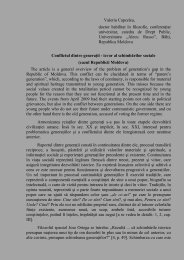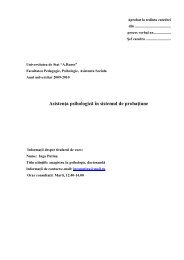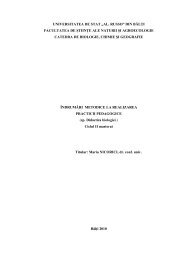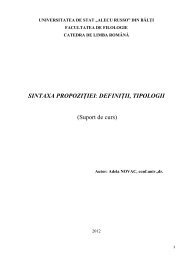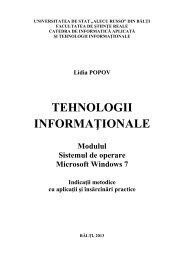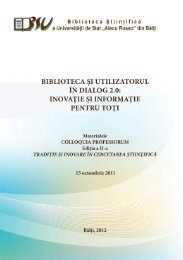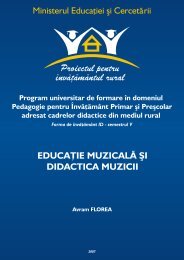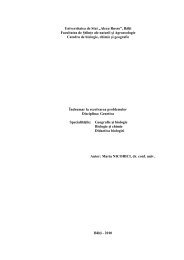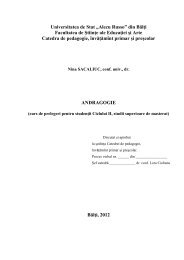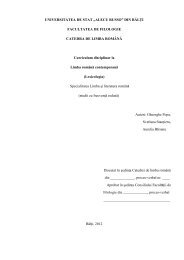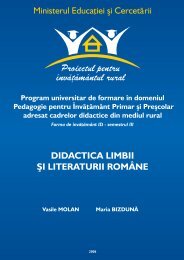3. Функциональный частичный перевод применяется для сокращения илиупрощения исходных текстов, когда они предназначены либо для массовогочитателя, либо для получателей менее высокого уровня готовности квосприятию такого типа исходных текстов. К таковым относятся различногорода пересказы, адаптации, версии и т. п.4. Полный перевод применяется для передачи исходных текстов, содержаниекоторых имеет настолько высокую значимость, что должно быть представленополучателю переводного текста в подробном виде.5. буквальный полный перевод применяется в сравнительно редких случаях,например: в учебных или научных целях, для академических изданийуникальных текстов, в частности эпоса, и т. п.6. Семантический полный перевод выполняется для передачи исходных текстов,имеющих высокую научную или социально-культурную значимость, подробноесодержание которых предназначено для широкого круга специалистов.7. Коммуникативно-прагматический полный перевод используется для передачиисходных текстов, имеющих высокую социально-культурную значимость,подробное содержание которых предназначено для массового получателя.18УПРАЖНЕНИЯУпражнение 1: Сопоставьте первый английский текст с русским и определитеспособ перевода и условия для его выбора. Примените аналогичный способперевода ко второму английскому тексту.I. Marks & SpencerDear Sir: I have many items purchased at Marks & Spencer by my peripateticbusinessman father, including some beautiful clothes and a fold-up umbrella. Ah, theumbrella! It has never broken, inverted, failed to open or been mislaid without beingrecognised as mine and returned to me. Having had it for about four years, I call thatunusual life span a testimony to British ingenuity.If Mrs. Thatcher ever decides to hand over the government to Marks & Spencer, Imay emigrate and change my nationality. Or maybe we could import some M&Smanagers to run our government!Barbara Pilvin PhiladelphiaПеревод:Барбара Пилвин из Филадельфии в своем письме рассказывает о своемвосхищении торговой фирмой Marks & Spencer, ссылаясь на пример купленногоу них зонта, который вот уже много лет не ломается, не заворачивается приветре, не заедает и не теряется, что свидетельствует, по ее мнению, о подлинноБританском качестве. Переходя на политические темы, Барбара уверяет, чтоM&S могли бы возглавить хоть британское, хоть американское правительство.
19IIDear Sir: Last summer, as we hosted a city child through the Fresh Air Fund, a gartersnake appeared in our woodpile. Geraldo had never seen a snake. Fascinated, he stoodjust a foot or so away, watching the snake as it wanned in the sunlight. There aren'tany snakes in the urban South Bronx. Gerry murmured that he'd like to catch thissnake and put it in a bottle to keep. I replied that I'm opposed to caging wild animals.Gerry looked at me, bug-eyed and gasped, That's a wild animal?'Rhu M. McBee Brewster, New YorkУпражнение 2: Переведите следующий текст посредством выборочногоперевода, сохранив основное сообщение и опуская подробности.In February 1987, the real thing happened. A star much larger and much hotter thanour sun reached the end of its conventional life. In its core, hydrogen in quantitiesequal to about six times the mass of the sun had been converted to helium in hellishthermonuclear reactions. Helium in turn had fused into carbon and oxygen, whichthemselves fused into even heavier elements. Eventually the innermost section of thecore, about half again as massive as the sun, was turned into almost pure iron. Thestar was running out of available reactions, and activity in the core slackened, Nowthe radiation pouring outward was no longer as strong as the gravitational forcepulling inward; the star collapsed, falling inward on itself until it could give no more,20and exploded, spewing radiation and most of its mass into space. For astronomers, thesupernova (known as Supernova 1987A, or SN1987A for short) was -- and is -- thestory of the century.Упражнение З: Переведите следующий текст посредством функциональногоперевода, обращая внимание на возможности сокращения и упрощениявыделенных исходных единиц.Ancient Athenian navy yards kept careful lists of equipment for their trireme fleet.Those lists that survive revealed two different lengths of oar, 13 feet and 13 feet 10inches, the shorter being used toward the narrow bow and stern of the vessel. Aristotlecompared their splayed-out pattern to the fingers of the hand. From Athenian accountsit is clear that a trireme was not for positioning alongside other craft for boarding andcapture, in the style of Hollywood sea battles. It was a fast seaborne missile, itsramming beak, reinforced with bronze, being used to hit other craft to hole and floodthem. Triremes were day sailors and carried only a handful of soldiers (14 in all) witha partial deck canopy to shield the top oarsmen from sun and rain and from enemyjavelins. Oarsmen customarily were free citizens. As the Greek historians Herodotusand Thucydides both relate, the Athenians and their allies, with a brilliant use oftriremes, beat off the Persians at the Battle of Salamis in 480 BC. If the Greeks hadlost, many ideas of government, of philosophy, of culture taken for granted todaywould have died with them.
- Page 1 and 2: Купить книгуВведен
- Page 3 and 4: Глава 4. Синтаксиче
- Page 5 and 6: эффективные приемы
- Page 7 and 8: подлежат переводу
- Page 9: художественной лит
- Page 13 and 14: 23к неудачной вылаз
- Page 15 and 16: Наиболее распростр
- Page 17 and 18: исходного предложе
- Page 19 and 20: 2 Зак. №964 33"На друго
- Page 21 and 22: Дамочка, которая си
- Page 23 and 24: то и нужно чувствов
- Page 25 and 26: интерес к солдатск
- Page 27 and 28: Упражнение 9: В след
- Page 29 and 30: распространенными
- Page 31 and 32: В целом к числу осн
- Page 33 and 34: зация. К подобному
- Page 35 and 36: Uriah, которое произн
- Page 37 and 38: the English Channel -- Ла-Ман
- Page 39 and 40: принадлежность к с
- Page 41 and 42: введет в английски
- Page 43 and 44: Е -- и, е N -- Н W -- У, вF -
- Page 45 and 46: 79Упражнение 2: Подб
- Page 47 and 48: 1. Energy (types of energy, law of
- Page 49 and 50: Упражнение 12: Восст
- Page 51 and 52: the Time of Troubleтатаро-м
- Page 53 and 54: 3. В некоторых случа
- Page 55 and 56: геополитических фе
- Page 57 and 58: президентского кре
- Page 59 and 60: Вот тогда ты и стан
- Page 61 and 62:
environmentalist, conservationalist
- Page 63 and 64:
Выбор среди этих ос
- Page 65 and 66:
Упражнение 3: Проан
- Page 67 and 68:
9. Силы нации нужно
- Page 69 and 70:
urban mercantile interests of the s
- Page 71 and 72:
В этом примере Голс
- Page 73 and 74:
других ассоциаций
- Page 75 and 76:
Irangate -- ИрангейтZero op
- Page 77 and 78:
7. He would stand second to none in
- Page 79 and 80:
1. Выражение Иов мно
- Page 81 and 82:
great oaks grow from little acornsM
- Page 83 and 84:
8. Лишь стало поспок
- Page 85 and 86:
Грамматические сво
- Page 87 and 88:
hotel (контекст обусл
- Page 89 and 90:
Применение какого-
- Page 91 and 92:
7. Williams reached out instinctive
- Page 93 and 94:
the globe. The author of America's
- Page 95 and 96:
that played the decisive role in fo
- Page 97 and 98:
Решение чисто рест
- Page 99 and 100:
Когда кто-нибудь по
- Page 101 and 102:
6. Even the cleverness turned out t
- Page 103 and 104:
Упражнение 5; Перев
- Page 105 and 106:
"sucker" in the prison hierarchy is
- Page 107 and 108:
домашний скот -- the ca
- Page 109 and 110:
а иногда даже прини
- Page 111 and 112:
8. a conversational clue подск
- Page 113 and 114:
10. Возможности испо
- Page 115 and 116:
205в военную службу,
- Page 117 and 118:
computer-generated translationsrepr
- Page 119 and 120:
212Here is an apple. Вот ябл
- Page 121 and 122:
значение, отличное
- Page 123 and 124:
She ran and bought her ticket and g
- Page 125 and 126:
5. Стяжение применя
- Page 127 and 128:
4. 'Who's complaining?' McWatt excl
- Page 129 and 130:
3. Вокруг, куда ни по
- Page 131 and 132:
существовавшим при
- Page 133 and 134:
ГЛАВА 1. ПРИЕМЫ ПЕРЕ
- Page 135 and 136:
Он толстый, как пор
- Page 137 and 138:
Необходимость разл
- Page 139 and 140:
2. Gradually there appeared out of
- Page 141 and 142:
одном языке. Они за
- Page 143 and 144:
prospered and the Good-scout predom
- Page 145 and 146:
ГЛАВА 2. ПРИЕМЫ ПЕРЕ
- Page 147 and 148:
небрежном именован
- Page 149 and 150:
265crises of the existence and moth
- Page 151 and 152:
9. Первая ракетка ми
- Page 153 and 154:
в языковых единица
- Page 155 and 156:
преобразованная, ц
- Page 157 and 158:
1. Полный перевод с
- Page 159 and 160:
5. Hollywood has made its business
- Page 161 and 162:
6. По выходе в свет "
- Page 163 and 164:
290непоколебимые пр



